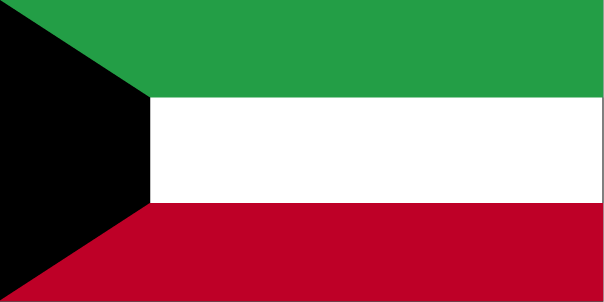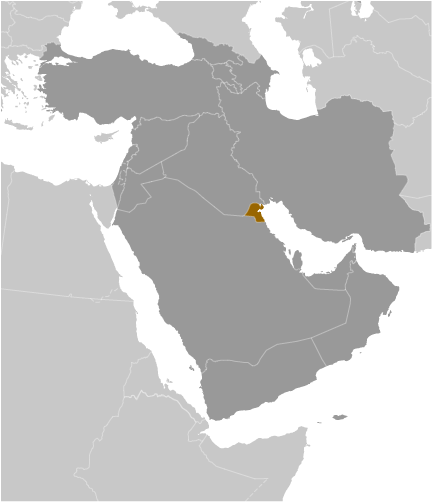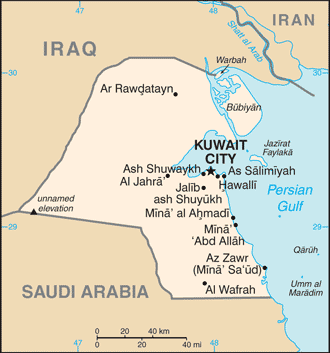|
Economy - overview:
|

|
|
Kuwait has a geographically small, but wealthy, relatively open economy with crude oil reserves of about 102 billion barrels - about 7% of world reserves. Petroleum accounts for nearly half of GDP, 95% of export revenues, and 95% of government income. Kuwaiti officials have committed to increasing oil production to 4 million barrels per day by 2020. The rise in global oil prices throughout 2011 and 2012 is reviving government consumption and economic growth. Kuwait has experienced a 20% increase in government budget revenue, which has led to higher budget expenditures, particularly wage hikes for many public sector employees. Kuwait has done little to diversify its economy, in part, because of this positive fiscal situation, and, in part, due to the poor business climate and the historically acrimonious relationship between the National Assembly and the executive branch, which has stymied most movement on economic reforms. In 2010, Kuwait passed an economic development plan that pledges to spend up to $130 billion over five years to diversify the economy away from oil, attract more investment, and boost private sector participation in the economy.
|
|
|
GDP (purchasing power parity):
|

|
|
$165.9 billion (2012 est.)
country comparison to the world: 60
$156 billion (2011 est.)
$144.3 billion (2010 est.)
note:
data are in 2012 US dollars
|
|
|
GDP (official exchange rate):
|

|
|
$174.6 billion (2012 est.)
|
|
|
GDP - real growth rate:
|

|
|
6.3% (2012 est.)
country comparison to the world: 38
8.2% (2011 est.)
2.5% (2010 est.)
|
|
|
GDP - per capita (PPP):
|

|
|
$43,800 (2012 est.)
country comparison to the world: 18
$42,400 (2011 est.)
$40,300 (2010 est.)
note:
data are in 2012 US dollars
|
|
|
GDP - composition by sector:
|

|
|
agriculture: 0.2%
industry:
42.3%
services:
57.5% (2012 est.)
|
|
|
Labor force:
|

|
|
2.304 million
country comparison to the world: 116
note:
non-Kuwaitis represent about 60% of the labor force (2012 est.)
|
|
|
Labor force - by occupation:
|

|
|
agriculture: NA%
industry:
NA%
services:
NA%
|
|
|
Unemployment rate:
|

|
|
2.2% (2004 est.)
country comparison to the world: 16
|
|
|
Population below poverty line:
|

|
|
NA%
|
|
|
Household income or consumption by percentage share:
|

|
|
lowest 10%: NA%
highest 10%:
NA%
|
|
|
Investment (gross fixed):
|

|
|
15.3% of GDP (2012 est.)
country comparison to the world: 135
|
|
|
Budget:
|

|
|
revenues: $106.9 billion
expenditures:
$69.18 billion (2012 est.)
|
|
|
Taxes and other revenues:
|

|
|
61.2% of GDP (2012 est.)
country comparison to the world: 9
|
|
|
Budget surplus (+) or deficit (-):
|

|
|
21.6% of GDP (2012 est.)
country comparison to the world: 3
|
|
|
Public debt:
|

|
|
7.1% of GDP (2012 est.)
country comparison to the world: 146
7.5% of GDP (2011 est.)
|
|
|
Inflation rate (consumer prices):
|

|
|
3.2% (2012 est.)
country comparison to the world: 85
4.7% (2011 est.)
|
|
|
Central bank discount rate:
|

|
|
1.25% (31 December 2010 est.)
country comparison to the world: 103
3% (31 December 2009 est.)
|
|
|
Commercial bank prime lending rate:
|

|
|
5.4% (31 December 2012 est.)
country comparison to the world: 156
5.2% (31 December 2011 est.)
|
|
|
Stock of narrow money:
|

|
|
$28.46 billion (31 December 2012 est.)
country comparison to the world: 59
$23.8 billion (31 December 2011 est.)
|
|
|
Stock of broad money:
|

|
|
$109.4 billion (31 December 2012 est.)
country comparison to the world: 52
$99.89 billion (31 December 2011 est.)
|
|
|
Stock of domestic credit:
|

|
|
$93.11 billion (31 December 2012 est.)
country comparison to the world: 54
$91.48 billion (31 December 2011 est.)
|
|
|
Market value of publicly traded shares:
|

|
|
$100.9 billion (31 December 2011)
country comparison to the world: 39
$119.6 billion (31 December 2010)
$95.94 billion (31 December 2009)
|
|
|
Agriculture - products:
|

|
|
fish
|
|
|
Industries:
|

|
|
petroleum, petrochemicals, cement, shipbuilding and repair, water desalination, food processing, construction materials
|
|
|
Industrial production growth rate:
|

|
|
8.7% (2011 est.)
country comparison to the world: 20
|
|
|
Current account balance:
|

|
|
$73.26 billion (2012 est.)
country comparison to the world: 8
$70.78 billion (2011 est.)
|
|
|
Exports:
|

|
|
$109.4 billion (2012 est.)
country comparison to the world: 38
$104.3 billion (2011 est.)
|
|
|
Exports - commodities:
|

|
|
oil and refined products, fertilizers
|
|
|
Exports - partners:
|

|
|
South Korea 17.7%, India 15.3%, Japan 13.7%, China 9.6%, US 8.4% (2011)
|
|
|
Imports:
|

|
|
$24.1 billion (2012 est.)
country comparison to the world: 69
$21.96 billion (2011 est.)
|
|
|
Imports - commodities:
|

|
|
food, construction materials, vehicles and parts, clothing
|
|
|
Imports - partners:
|

|
|
US 12.4%, China 9.7%, Saudi Arabia 8.4%, South Korea 6.5%, India 6.4%, Japan 6.2%, Germany 5%, UAE 4.3% (2011)
|
|
|
Reserves of foreign exchange and gold:
|

|
|
$29.26 billion (31 December 2012 est.)
country comparison to the world: 50
$25.91 billion (31 December 2011 est.)
|
|
|
Debt - external:
|

|
|
$28.21 billion (31 December 2012 est.)
country comparison to the world: 71
$29.87 billion (31 December 2011 est.)
|
|
|
Stock of direct foreign investment - at home:
|

|
|
$3.194 billion (31 December 2012 est.)
country comparison to the world: 89
$2.764 billion (31 December 2011 est.)
|
|
|
Stock of direct foreign investment - abroad:
|

|
|
$57.97 billion (31 December 2012 est.)
country comparison to the world: 34
$48.39 billion (31 December 2011 est.)
|
|
|
Exchange rates:
|

|
|
Kuwaiti dinars (KD) per US dollar -
0.2801 (2012 est.)
0.276 (2011 est.)
0.2866 (2010 est.)
0.2877 (2009)
0.2679 (2008)
|
|
|
Fiscal year:
|

|
|
1 April - 31 March
|
|
|
|





 )
)



